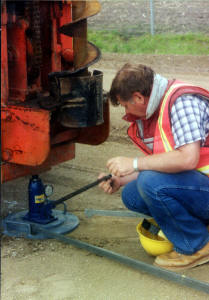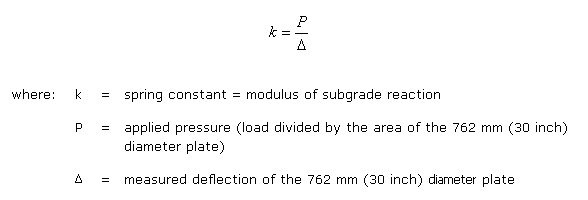Plate Load Test
The plate load test (see Figure 1 and 2) can be used to measure the modulus of subgrade reaction for in situ material. The test involves pressing a steel bearing plate into the surface to be measured with a hydraulic jack. The resulting surface deflection is read from dial micrometers near the plate edge and the modulus of subgrade reaction is determined by the following equation:



The 1993 AASHTO Guide offers the following relationship between k-values from a plate bearing test and resilient modulus (MR):
![]()
Standard Test Methods
- AASHTO T 222 and ASTM D 1196: Nonrepetitive Static Plate Load for Soils and Flexible Pavement Components, for Use in Evaluation and Design of Airport and Highway Pavements
